#3E-Problem-Solving
Note
What's OSR? I've seen you mention it several times in your RPG posts. Is it like a genre of rpg or...?
Hey, sorry I took so long to reply to this lol you probably already just googled it by now.
But like. Anyway.
OSR (Old-School Revival, Old-School Renaissance, and more uncommonly Old-School Rules or Old-School Revolution, no one can really agree on what the R means) is less like a genre and more like a movement or a loosely connected community that seeks to capture the tone, feel and/or playstyle of 70's and 80's fantasy roleplaying games (with a particular emphasis on old-school editions of Dungeons and Dragons, particularly the Basic D&D line but pretty much anything before 3e falls under this umbrella), or at least an idealized version of what people remember those games felt like to play.
There isn't exactly a consensus on what makes a game OSR but here's my personal list of things that I find to be common motifs in OSR game design and GM philosophy. Not every game in the movement features all of these things, but must certainly feature a few of them.
Rulings over rules: most OSR games lack mechanically codified rules for a lot of the actions that in modern D&D (and games influenced by it) would be covered by a skill system. Rather that try to have rules applicable for every situation, these games often have somewhat barebones rules, with the expectation that when a player tries to do something not covered by them the GM will have to make a ruling about it or negotiate a dice roll that feels fair (a common resolution system for this type of situation is d20 roll-under vs a stat that feels relevant, a d6 roll with x-in-6 chance to succeed, or just adjudicating the outcome based on how the player describes their actions)
"The solution is not on your character sheet": Related to the point above, the lack of character skills means that very few problems can be solved by saying "I roll [skill]". E.g. Looking for traps in an OSR game will look less like "I rolled 18 on my perception check" and more like "I poke the flagstones ahead with a stick to check if they're pressure plates" with maybe the GM asking for a roll or a saving throw if you do end up triggering a trap.
High lethality: Characters are squishy, and generally die much more easily. But conversely, character creation is often very quick, so if your character dies you can usually be playing again in minutes as long as there's a decent chance to integrate your new PC into the game.
Lack of emphasis on encounter balance: It's not uncommon for the PCs to find themselves way out of their depth, with encounters where they're almost guaranteed to lose unless they run away or find a creative way to stack the deck in their favor.
Combat as a failure state: Due to the two points above, not every encounter is meant to be fought, as doing so is generally not worth the risk and likely to end up badly. Players a generally better off finding ways to circumvent encounters through sneaking around them, outsmarting them, or out-maneauvering them, fighting only when there's no other option or when they've taken steps to make sure the battle is fought on their terms (e.g. luring enemies into traps or environmental hazards, stuff like that)
Emphasis on inventory and items: As skills, class features and character builds are less significant than in modern D&D (or sometimes outright nonexistent), a large part of the way the players engage with the world instead revolves around what they carry and how they use it. A lot of these games have you randomly roll your starting inventory, and often this will become as much a significant part of your character as your class is, even with seemingly useless clutter items. E.g. a hand mirror can become an invaluable tool for peeping around corners and doorways. This kind of gameplay techncially possible on modern D&D but in OSR games it's often vital.
Gold for XP: somewhat related to the above, in many of these games your XP will be determined by how much treasure you gather, casting players in the role and mindset of trasure hutners, grave robbers, etc.
Situations, not plots: This is more of a GM culture thing than an intrinsic feature of the games, but OSR campaigns will often eschew the long-form GM-authored Epic narrative that has become the norm since the late AD&D 2e era, in favor of a more sandbox-y "here's an initial situation, it's up to you what you do with it" style. This means that you probably won't be getting elaborate scenes plotted out sessions in advance to tie into your backstory and character arc, but it also means increased player agency, casting the GM in the role of less of a plot writer or narrator and more of a referee.
Like I said, these are not universal, and a lot of games that fall under the OSR umbrella will eschew some or most of these (it's very common for a lot of games to drop the gold-for-xp thing in favor of a different reawrd structure), but IMO they're a good baseline for understanding common features of the movement as a whole.
Of course, the OSR movement covers A LOT of different games, which I'd classify in the following categories by how much they deviate from their source of inspiration:
Retroclones are basically recreations of the ruleset of older D&D editions but without the D&D trademark, sometimes with a new coat of paint. E.g. OSRIC and For Gold and Glory are clones of AD&D (1e and 2e respectively); Whitebox and Fantastic Medieval Campaigns are recreations of the original 1974 white box D&D release; Old School Essentials, Basic Fantasy and Labyrinth Lord are clones of the 1981 B/X D&D set. Some of these recreate the original rules as-is, editing the text or reorganizing the information to be clearer but otherwise leaving the meachnics unchanged, while others will make slight rules changes to remove quirks that have come to be considered annoying in hindsight, some of them might mix and match features from different editions, but otherwise they're mostly straight up recreations of old-school D&D releases.
There are games that I would call "old-school compatible", that feature significant enough mechanical changes from old-school D&D to be considered a different game, but try to maintain mechanical compatibility with materials made for it. Games like The Black Hack, Knave, Macchiato Monsters, Dungeon Reavers, Whitehack, etc. play very differently from old-school D&D, and from each other, but you generally can grab any module made for any pre-3e D&D edition and run it with any of them with very little to no effort needed in conversion.
There's a third category that I wouldn't know how to call. Some people call then Nu-OSR or NSR (short for New School revolution) while a small minority of people argue that they aren't really part of the OSR movement but instead their own thing. I've personally taken to calling them "Old School Baroque". These are games that try to replicate different aspects of the tone and feel of old-school fantasy roleplaying games while borrowing few to none mechanics from them and not making any particular attempts to be mechanically compatible. Games like Into the Odd, Mörk Borg, Troika!, a dungeon game, FLEE, DURF, Songbirds, Mausritter, bastards, Cairn, Sledgehammer, and too many more to name. In my opinion this subsection of the OSR space is where it gets interesting, as there's so many different ways people try to recreate that old-school flavor with different mechanics.
(Of course, not everything fits neatly into these, e.g. I would consider stuff like Dungeon Crawl Classics to be somewhere inbetween category 1 and 2, and stuff like GloG or RELIC to be somewhere imbetween categories 2 and 3)
The OSR movement does have its ugly side, as it's to be expected by the fact that a huge part of the driving force behind it is nostalgia. Some people might be in it because it harkens back to a spirit of DIY and player agency that has been lost in traditional fantasy roleplaying games, but it's udneniable that some people are also in it because for them it harkens back to a time before "D&D went woke" when tabletop roleplaying was considered a hobby primarily for and by white men. That being said... generally those types of guys keep to themselves in their own little circlejerk, and it's pretty easy to find OSR spaces that are progressive and have a sinificant number of queer, POC, and marginalized creators.
211 notes
·
View notes
Text
Sonic 2 development stories from character designer Judy Totoya
Yasushi Yamaguchi, AKA Judy Totoya, character designer and main graphic designer on Sonic 2, posted a few threads on Twitter for the 30th anniversary of Sonic 2:
About Tails:
https://twitter.com/judy_totoya/status/1594372821794586624

“ A picture of him when he was just an admirer of Sonic. He's not chasing him yet. He imitated him and wore gloves and similar coloured shoes, but they were too big and he tied them up with a belt. “
The inclusion of a 2-player mode had already been confirmed and the American team submitted many ideas for creating this character, but the programmer, Mr. Naka, said he wanted to create a 1.5-player character that could be played with their sister (sic) and that even beginners could handle, so we created a character that was not a rival, but a sidekick character. Naka asked us to create a cute character like Urusei Yatsura's pure-hearted fox, and that's what I did.

At first, he only had one tail, but it didn't have enough impact, so I was inspired by Myau from Phantasy Star 1 and came up with the idea of using two tails as propellers. The first Sonic game was a huge success in the US, but not in Japan. So we tried to create a cute design with Japan in mind.

The characterisation and colours were designed to be symmetrical to Sonic's. His relationship with Sonic was determined with the image of Piccolo and the young Son Gohan from Dragon Ball in mind during the production of the game.
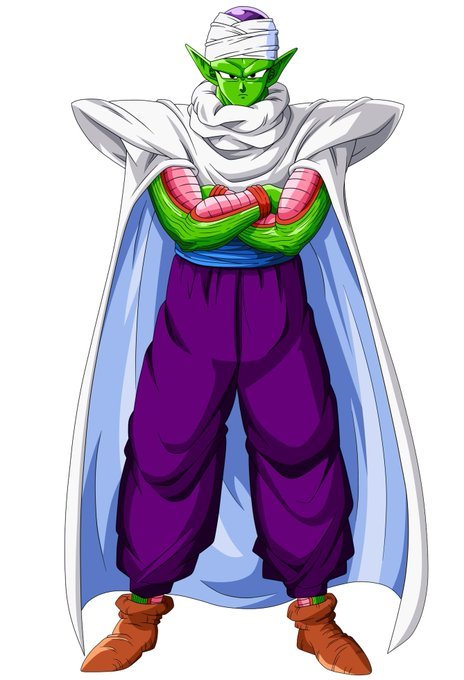

As you know, the etymology of the name comes from the word for speed (mph). The name Prower was coined by combining "per hour" and "power
Bonus: Myau from Phantasy Star drawn by Judy Totoya for the 6th issue of Sega's official magazine, SPEC, published in September 1990.
https://retrocdn.net/images/3/3e/SPEC_6.pdf

About Super Sonic:
https://twitter.com/judy_totoya/status/1594389198852993024

“Due to the main reference, the original story is, needless to say, a secret one, so it was a super secret that only those who cleared a special stage of high difficulty could see.
In the first place, Super Sonic would not have been born without the existence of manga artist Sakura Tamakichi (Super Mario Adventures). During the development of Sonic 2, in Famitsu's column 'Shiawase no Katachi', Tamakichi played Sonic 1 desperately to see the true ending, but the result deceived him so much that we decided to give a reward that would definitely pay off in Sonic 2. The basic specification of all Sonic's items with a time limit on the consumption of rings was decided relatively quickly, but the problem was the graphics, as it was impossible to redraw all the patterns in terms of time and capacity.
We tried various effects, such as a seven-colour glowing figure, but none of them were good enough. In desperation, I tried drawing the current Super Sonic, but it was not realistic to draw all the patterns, so I replaced only the basic pattern, the transformation pattern and the normal running pattern, and cheated with colour changes for the rest. High-speed running was solved with two flying patterns. This managed to reach a realistic level, so it was implemented as a super-secret only. The schedule was very tight and I started work on the ending picture at 1am on the day of master-up. The program had been dummy-programmed, so all that was left to do was to replace the picture of the final pose, but if we had been an hour short, the Super Sonic picture would not have been ready in time and it would have remained as normal Sonic.“
About Mecha-Sonic:
https://twitter.com/judy_totoya/status/1594694031396999168

“Several of his attacks could not be integrated into the game due to time constraints: long laser shot from his eye, homing missiles from its fingers (10 shots in total), Super Gravity Smash (a gravity projectile that disappears after a certain amount of time, but sucks up the rings if it gets too close), which is launched when his chest armour opens.
Due to the schedule, the creation of the Death Egg zone map was cancelled and replaced by two consecutive boss battles in the dedicated boss room, but originally Mecha-Sonic was planned to appear as a mid-boss in the middle of the zone.

Its design concept was based on the image of Mechagodzilla and Gigan, with a strong and painful look. “
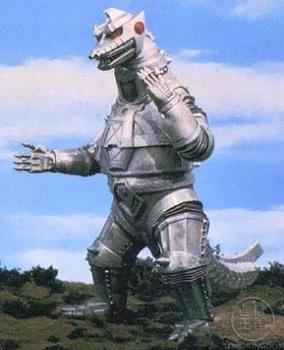

(note: the designers also took inspiration from Gamera for one of the enemies)
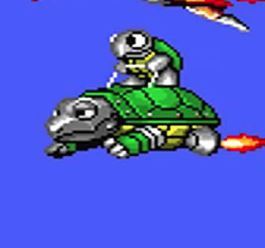

“After the game's graphics were completed, the blades would be flown during jump-rotation attacks as an additional attack, but they were completely retrofitted, so it was not clear where they would come from. “
About Sonic's sprite:
https://twitter.com/judy_totoya/status/1595403450845892608
https://twitter.com/judy_totoya/status/1595443192803266561

"Sonic 2 uses the same basic pattern as Sonic 1, except for the additional pattern (only the running has longer legs). There was one palette for one character in Sonic 1, while Sonic 2 uses one palette for two characters, so the blue gradient has been reduced."
Note: on Megadrive, 4 colour palettes can be displayed on screen. A palette consists of 16 colours, one of which is used as a transparent layer to display the elements behind the sprite.
Red has been reduced from 3 to 2 shades. The yellow used for Eggman, which has the same palette as Sonic, has been adjusted slightly to orange and used as the main colour for Tails. The shade of red that was removed has been replaced with a shade of orange.
"I wasn't involved, but I think it was very difficult to control the palette in Sonic 3 because the number of characters increased even more.
"By the way, the enemies and the user interface (UI) have the same palette, but the bosses lacked color, so I used the black of the UI shadow for them. That's why when you damage a boss, the black part of it and the black part of the UI shadow will flash."
113 notes
·
View notes
Text
3e: The Love Potion
We’re all kind of on the page that ‘love potions’ in stories are probably bad, right?
Those things that you could buy in 3e as a cheap, disposable magical item?
It’s one of those tropes from history that people used pretty freely up until like, even until 2013. Gravity Falls featured an episode about a character using a love potion, and then realising it was a foolish plan and going to undo it, only to find that, y’know, maybe it was an okay idea after all. And that was Gravity Falls, a cartoon I like. Shock! Horror! And that’s a bad trope and all!
Love potions show up in stories all over the place, and that makes them an iconic trope and I feel like they go through a sort of life cycle. In their oldest appearances — as I remember and are filtered through the mind of a boy like me — the love potion is a solution to a problem. Then, as things get a little more protestant, a little more puritanical, love potions tend to be set up in the first part of the story, and then developed and dismissed in the second part. Love potions are a thing you think will solve your problems, then you find they don’t.
There are a lot of reasons they can fail. They can fail because you find out that the person you love-potioned, you don’t actually want them in love with you. They can fail because you find out that the potion doesn’t make them love you the way that you imagined. They can fail just because love potions aren’t real but now you have to consider what it meant that you tried. They can fail because they have to destroy the way the person you were interested in order to work, somehow. And of course sometimes they can fail because you mess up their application like spilling it on a bird or something.
Lots of different ways that ‘the love potion’ is a setup that gets subverted. In fact, so much so that, especially in reset-heavy pulp media like sitcoms and weekly dramas, love potions fit the mould really conveniently. The subversion means that the characters undo the love potion by the end, and that’s that. It’s a tidy little plot loop, and the form it’s poured into handles it just fine. Makes sense.
Why can ya buy ’em?
Look, 3rd edition was a hungry beast. It needed content, content, content and a lot of what it needed never made sense to me. I did not think I needed as many versions of ‘human, but ugly and weird’ as the game books provided me. I never needed the flying mount rules, or the keep rules. They were nice, ostensibly but they weren’t useful, because they weren’t focused on the game played by players and instead on a sort of systemitising the world. This is a reasonable thing for a system to do when it wants to do it, I’m not criticising them for the choice, but that the choice put the way D&D 3E was built at odds with the way I expected to play it.
You’d see this throughout supplements, in Dragon Magazines and soft cover splatbooks; sometimes there was a cool idea that the game could do and that cool idea ran headlong into the system’s design. A gladiatorial campaign? Cool idea, here are maps and opponents. Oh, the system isn’t designed to make one-on-one fights very interesting for the uninvolved parties and dying represents an immense debt? Hm, sounds like the real thing this system needs is loans and banking. Oh wait, but if you’re doing gladiatorial fighs, how do you get loot from enemies? You can’t loot the bodies, that belongs to their stable! There’s got to be a payment system!
And thus we return to the love potion. The love potion was in the Dungeon Master’s Guide (and SRD, even now!) because it’s an obvious trope, the item works in a simple, easily explained way, and it fills some inches in the book that needs so, so many inches filled. The item is built by a formula, it works to a rule and it kind of rests on a leyline of things D&D 3e doesn’t do very well.
First of all, the item gives a save. Well it has to right, because otherwise it’d be overpowered. But saving throws aren’t like, narratively coherent things. They’re there to defend you from attacks, but ostensibly, they’re there to represent how well your body resists things changing it (which was why you can resist healing spells and, in some cases, are called upon to do so, which is, yes, dumb). Don’t worry, though, the DC is really low: Only a DC 14. Which means an ordinary human with nothing heroic going on has about a 30% chance to ignore it and it lasts for 1d3 hours.
Thus we position the elixir of love perfectly badly. It’s a magic item that an adventurer can buy in bulk, that they never would care about, that represents life-deforming mind control, but not for very long and not very well. It promises what a love potion in a story is, but delivers instead a very crap charm spell, which is the closest thing it can approximate to love because the game system wants to try and systemitise love without dealing with how incredibly overpowered love is. There’s no category of ‘minor effect’ or ‘story beat’ for magical items, which need to be built to instead, operate the way adventurers expect adventurers to work.
The Elixir of Love doesn’t actually represent anything particularly heinous. Nothing out of type. It’s a love potion, but because it sucks it’s not that bad, and nobody would use it, except because it sucks, and that it sucks isn’t because of the story needs but because of the way the mechanics of the system handle items. It’s the same wonky stuff that permeates 3e. Systems aren’t immune to this. My favourite system isn’t immune to this kind of thing!
Still pretty funny way to waste a year’s wages for a normal person.
Check it out on PRESS.exe to see it with images and links!
8 notes
·
View notes
Text
a thing to read
So , this would be pinned post ,to introduce myself to everyone who is new and my current followers
• Hello, my namie is Vesti and I'm 19 years old , I am genderfluid(She/He/They), I am multifandom artist (mainly for now kny and tes ) so don't be supprised if I sometimes draw other fandom.This is an art blog. But I will also talk about my ocs
• I don't support people who sexualizng their minor ocs, ships incest or adult x minor ,and others stuff like it , if you are one of these please don't follow this blog or I will block you.
•My DMs and ask boxes are always open, I will be always there if you need someone to chat with. However I might not always response in time since I'm also busy with school but I will never ignore your message.
• Do not repost my arts without my permission.
• Steal/Treace=block
• Art trades are open only for my moots ,about comissions I don't know for now but maybe I will open in future, and art request are open.
ABOUT MY OCS
Main TES's ocs :
★ Outlander/Nerevarine : Nerevarine, He/They/She ,30 years (durning 3E 427) 200+(Durning 4E 201) Dunmer(Dark Elf ) ,He is not namless because he had name however durning main events of Morrowind he has forgets his name. Imperial City's merchant who got mistook with skooma dealer.Basically as kid he could see Nerevar but then in some parts he become him. Really playful and joyful person. As incarnation of Nerevar he have all memories of him but they work like puzzle each of them unlock with time.
★ Altrus Gramlock: Hero of Kvatch, scholar of arcane university, substitute of Mad God, He/Him, 55 years old , Altmer (high elf), before Oblivion Cris Altrus was a prince of Alinor in Summerset Isles however his parents rejected him from throne in Alinor and arranged marriage in Anvil with countess of Anvil's sister who later deceased. Got mistook by gaurds that he is gray fox. Altrus is also a descendant of Mannimarco a. He is substitute Mad God.Very grumpy old man but sometimes .
★ Mikayla Rosewood : Last dragonborn,arch-mage of college of winterhold, dawngaurd, She/Her, 36 years old , Altmer/Bosmer (High elf/wood elf), Mikayla is grand daughter of Altrus however she unaware of that ,she was raised in Anvil and used to be priestess of dibella. By thalmor she is considered to be "defected" Altmer (because of her height) which is very unpleasnt for her. She is very carring person and rather lovely. She doesn't like to solve problems with voilent but dyplomacy.
★ Feliciana Galerion : Vestige ,She/Her 28 years old , Imperial/Breton. Born and raised in Daggerfall ,after the death of her parents and she has met Vanus Galerion and later on she was adopted by him. Both talented in sword and magic. Very bubbly person
★ Fjoanna Cloud-Breaker : Agent of Dagerfall ,She/They 30 years , Nord/Altmer (High elf). Right hand for emperor Uriel and spy in daggerfall who investigate the circumstances of King Lysandus. Fjoanna is a person with short temper,who will always tell what she think.
★Ayija : Eternal Champion, She/Her 16 years old ,Khajiit/Ohmes-raht. A clueless kid who managed to defeat Jagar Tharn.
Others TES's ocs:
★ Dagoth Ivris : Sixth house member and ex member of morag tong ,She/Her ,Dunmer (Dark Elf), Dagoth Ur's niece,first friend that Nerevarine has made in Vvardenfell and later become nerevarine's companion.
★ Drel Vadrith: a friend of Nerevarine who were once ordinator,Dunmer (Dark Elf),He/They.
★ Telvanni Rami : She/They,dunmer and telvanni sorcerer who were taught by Dyvaith Fyr.
★Gaelia Mossvale : Arena Grand Champion, member of theives guild, Knight of the White Stallion, They/Them,bosmer(wood efl), wife of Mazoga the Orc, Gray Fox's follower.
★J'zera : Theives guild master, Nightingale,Member of college of Winterhold(unoficially), She/Her ,Khajiit, sister of J'zargo.
★ Redoran Usya : She/Her dunmer (Chimer formerly) Formerly member of house Redoran ,strong knight who lately become Sotha Sil's consort.
★ Nelyn Hlaalu : She/Her dunmer , member of house hlaalu and runway who become a pact hero ,later also hero of fargrave
★Valande: He/Him, Maormer who left Pyandonea and tried to build a live on Summerset Isles
★ Blanac the arichtect: Dwemer ,They/Them . Used to build many stuff ,now they are dwarven spectre and live in his own place.
★ Ciligorath: Demprince of Sheogorath , She/Her Bosmer (wood elf). Lord of chaos and disaster.
★Hermaues Caryalin : Demiprince of Hermaues Mora and Arcanist He/Him, Altmer (high elf) Savior of Westerm Skyrim and later partner to Fennorian
★ Alaywen : She/Her Altmer(high elf) necromancer ,Mannimarco's daughter and second wife to prince naemon, later ruler of summerset isle ,the one who continued the line
★ Llilana : Demiprince of Mephala She/Her Dunmer(Dark Elf) assasin and active member of morag tong who likes to work in secret.
Punbalga : Demiprince of Malacath They/Them. Blacksmith who live on High Rock.
Sanenle: Ayleid She/Her ,Ayleid queen and wife of king laloriaran dynar
19 notes
·
View notes
Text
Misfits - Core Tapes (or my first attempt at game blogging)
Disclaimer: I will update this text with some frequency, and it will be fixed here. I know it's a mess right now, sorry!
So, for a while, im kind of making a game.
Something that can mix my obsession growing up with comics and the newfound success of media that deals with powers and mutations and subverts the "Marvel Style".
So, Misfits is my Post-OSR-Resistance attempt to that. Inspired by stuff that i like from the OSR and Post-OSR corners of the ttrpg designsphere (like Bastionland, Mothership, Songbird 3e, Eco Mofos and Lost Bay), by things from Rowan, Rook and Decard and they Resistance games, and by a myriad of other influences on rules lite games like 24XX, Offworlders, Lumen and etc etc etc
I expect to post more about it here soon but, for now, those are the bones of Misfit. I have to shout it to the void before making other stuff. Hope someone enjoys it's initial vibe:
1. MISFITS MUGSHOTS (Character sheet):
Stats (1 point each and assign 5. No Stat can get to 6):
- Body (Physical experiences, agility, strength, throwing punches, jumping between buildings)
- Vibe (Social experiences, charisma, etiquette, flirting, bluffing)
- Weird (Unreal experiences, spirit, soul, sixth sense, your PWRZ, searching metaphysical insight, harming extracorporeal entities)
- Brains (Intellectual experiences, logical thinking, riddle solving, not falling for bullshit)
Moodboard: Pick a few and expand on it's vibe (coming soon, but it's basically a style section. it's important to look cool and pretty)
Stuff: Important stuff to use or carry around. Things that cause harm have a stress die attached. Other stuff can be used contextually to gain an extra die, success on a action, clear stress, etc.
PWRZ: Cool powers. They usually have a stress (damage) tier, a flavor description and a mechanical effect. (Pick a passive PWR and one for each weird point)
- Passive
- D4
- D6
- D8
- D12
- D20
Quirk (Some different mechanics of the Mugshot):
2. ACTING
- When attempting an action with uncertain outcomes or where complications could be interesting, roll d6s with the most approriate stat (I think as ways of doing or feeling things).
- Always roll at least one dice. If in advantage or disadvantage add or subtract dice as seem fitting. If disadvantaged below zero, start to roll and pick the worst.
- Stats are meant to be flexible and open to creative problem solving.
- Misfits can throw a knife with their Body, their Brains or even with their Weird after using the knife for years, getting attached and naming it Poco.
- Stuff and people can have complex relations with Stats (seeing status as ways of feeling) that may allow creative interpretations.
- Nothing just fails. Something always happen in the world.
- If an action is too complex to be solved with a single roll or take space and time to develop it's a PLAN. A complexity will be defined in a CLOCK format between 4 and 12 segments, where the Misfit will be able to act to advance those segments until completion. Failing in actions related to the PLAN can start an opposite clock with consequences, expand it's segments or even collapse the entire PLAN with approriate (and possible disastrous) consequences (I see PLANS as a way of extending actions into sequences, helping to streamline the play and also raising the stakes. It's a way I enjoy to play especially solo)
3. DICE RESULTS:
1-3: A failure. But more than that, an outcome that didn't met the expectations. Some complications arrived, the competition was fiercer than it looked like, the stakes are now higher, the context changed. Stress can be suffered.
4-5: A success with complications. A twist, new element or context can enter the situation as well.
6: Success. Clean success, the narrative moves forward as intended
More than one 6: Critical success. More stress dealt, more favorable circumstances, sunshine and rainbows.
4. STRESS:
A track that goes to 10 that stores all the Misfit's misfortunes. Everytime you receive stress from any source unless your PWRZ (be it physical harm, a very embarassing interaction or mental overload from a paracausal entity) fill the track and roll a D10. If the result goes under the current stress value, the Misfit suffer a Strike. A concrete manifestation of consequences related to one of the stats. 4 Strikes and you are OUT.
If the stress comes from your PWRZ you just fill the track withou rolling for strikes. Your PWRZ themselves can't take you out but they will make you frail.
5. HURTING THINGS (AND GETTING HURT)
- The combat is dynamic, focused on player facing rolls.
- The Misfits always go first, unless taken unprepared.
- Enemies attacks come with results of Failures or Success with complications.
- The turn goes on in Vibe order. Any action can be attempted. Failing actions in combat usually leaves the Freak exposed to being hurt.
- Foes have particular behaviors as described on UNEASY THINGS (future zine with threats). When the resistence of a foe hits 0 it's dead. Most will not fight until that point. But some will.
6. THE EVERYDAY AND THE SANDBOX (It's in a new post!):
- What you do?
- Conspiracies and Happenings (to gain Fame)
- Spend FAME to create PLANS and make your Happenings, Factions and know more Faces
- PLANS: Complex actions that require time and multiple efforts (Flirting, Making Friends, Organizing a Party, Creating a Bowling Club, Investigating a Murder, etc)
- MESSY SCENES!: Complex moments with big stakes that deserve narrative spotlight. Like: A Chase, Fighting Big Things, Fucking, Karaoking, Dueling,
- The game can be played with as many complexities as wanted. Some PLANS and MESSY SCENES can be easily diluted to one rolling, simple combat or just roleplaying without dice. But i think those are nice procedures to Solo play and also for some types of Group Play, easing players into narrative control within their MESSY SCENES and framing clearly objectives with the PLANS
7. FAME (you guessed right, coming soon):
- Solving Conspiracies and helping FACES out in Happenings grants FAME.
- FAMOUS Misfits can really alter the Everyday, starting factions, throwing up legendary ragers, becoming marketable capers or even starting an revolution.
8. CREDIT/GETTING STUFF
- Misfits always have enough to get by. Some start with a little more, as can be seen by their Mugshot or Moodboard.
- Credit is abstracted in 6 tiers that follow the PWRZ tiers and can be used to buy stuff, define "loot" and payments.
-Acquiring things that are into your credit tier is mundane and simple. Everything above your credit tier requires either some valuable stuff or you will be In Debt
- While In Debt you can't buy nothing above the misfit tier, and have to get some loot to sell, win some reward for a happening, or go to The Board and find some Job
-To change your Credit tier you don'thave to hoard riches, but get known. The only way to upgrade your credit tier is investing Fame.
TIERS:
1. Misfit/simple (resources with no die value. worthless in trading/selling)
2. Working class (D4)
3. Degree haver (D6)
4. Up and coming (D8)
5. Money mover (D12)
6. Filth rich (D20)
9. WRONGDOING
- Every Misfit has already beem accused of some kind of wrongdoing. It can be true or it can be made up. Fact is, a Misfit can't really stay put and live a normal life cause they already have been stripped of the normality.
10. PATH
- Also a future exploration here, but the idea is having another layer of personality and a goal beyond "live life, make friends, fight the system" for Misfits. My idea here is to eventually get to something like Beats from The Heart, turning Paths as ways of getting more powerful:
An exploratory list of Paths:
- Hedonist
- Communitary
- Explorer
- Revolutionary
2 notes
·
View notes
Text
Biology How Life Works 4e James Morris Test Bank

Biology How Life Works 4e James Morris Test Bank
Table of Contents
Watch Jim Morris explain the rationale behind the table of contents:
Video Part 1
Video Part 2
Part 1 From Cells to Organisms
Chapter 1 Chemical, Cellular, and Evolutionary Foundations of Life
Case 1 Life’s Origin: Homeostasis, Information, and Energy
Chapter 2 Molecules of Life
Chapter 3 Cells, Membranes, and Homeostasis
Chapter 4 Nucleic Acids and Information Flow
Chapter 5 Protein Structure, Function, and Synthesis
Visual Synthesis 1 Gene Expression
Chapter 6 Making Life Work
Chapter 7 Cellular Respiration
Chapter 8 Photosynthesis
Visual Synthesis 2 Harnessing Energy
Case 2 Cancer: Cell Signaling, Form, and Division
Chapter 9 Cell Signaling
Chapter 10 Cell and Tissue Form
Chapter 11 DNA Replication and Cell Division
Visual Synthesis 3 Cellular Communities
Case 3 Your Personal Genome: Variation and Inheritance
Chapter 12 Genomes and Biotechnology
Chapter 13 Mutation and Genetic Variation
Chapter 14 Meiosis and Mendelian Inheritance
Chapter 15 Sex Chromosomes, Linked Genes, and Organelle Inheritance
Chapter 16 Complex Traits
Chapter 17 Genetic and Epigenetic Regulation
Chapter 18 Genes and Development
Visual Synthesis 4 Genetic Variation and Inheritance
Chapter 19 Viruses
Visual Synthesis 5 Viruses
Case 4 Malaria: Coevolution of Humans and a Parasite
Chapter 20 Evolution
Chapter 21 Species and Speciation
Visual Synthesis 6 Speciation
Chapter 22 Phylogeny, Fossils, and the History of Life
Chapter 23 Human Origins and Evolution
Visual Synthesis 7 History of Earth and Life
Part 2 From Organisms to the Environment
Case 5 The Human Microbiome: Diversity Within
Chapter 24 Bacteria and Archaea
Chapter 25 Eukaryotic Origins and Diversity
Chapter 26 Being Multicellular
Case 6 Agriculture: Feeding a Growing Population
Chapter 27 Plant Form, Function, and Diversity
Chapter 28 Plant Reproduction
Chapter 29 Plant Physiology
Visual Synthesis 8 Angiosperms
Chapter 30 Plant Growth and Development
Chapter 31 Plant Defense
Chapter 32 Fungi
Case 7 Bio-Inspired Design: Using Nature to Solve Problems
Chapter 33 Animal Form, Function, and Evolutionary History
Chapter 34 Animal Diversity
Visual Synthesis 9 Diversity Through Time
Chapter 35 Animal Nervous Systems
Chapter 36 Animal Movement
Chapter 37 Animal Endocrine Systems
Chapter 38 Animal Respiratory and Cardiovascular Systems
Chapter 39 Animal Metabolism, Nutrition, and Digestion
Chapter 40 Animal Renal Systems
Visual Synthesis 10 Homeostasis
Chapter 41 Animal Reproduction and Development
Chapter 42 Animal Immune Systems
Case 8 Climate Change: Coral Reefs at Risk as the World Warms
Chapter 43 Animal Behavior and Behavioral Ecology
Chapter 44 Population Ecology
Chapter 45 Species Interactions and Communities
Visual Synthesis 11 Succession
Chapter 46 Ecosystem Ecology
Visual Synthesis 12 Flow of Matter and Energy Through Ecosystems
Chapter 47 Climate and Biomes
Chapter 48 Humans as a Planetary Force
Test Bank For Biology How Life Works 3e James Morris Here
Biology How Life Works 4e James Morris Test Bank Sample
Download
Read the full article
0 notes
Link
Organic Chemistry Student Solution Manual/Study Guide 3rd Edition, ISBN-13: 978-1119378693 [PDF eBook eTextbook] 1104 pages Publisher: Wiley; 3 edition (January 4, 2017) Language: English ISBN-10: 1119378699 ISBN-13: 978-1119378693 This is the Student Study Guide and Solutions Manual to accompany Organic Chemistry, 3e. Organic Chemistry, 3rd Edition is not merely a compilation of principles, but rather, it is a disciplined method of thought and analysis. Success in organic chemistry requires mastery in two core aspects: fundamental concepts and the skills needed to apply those concepts and solve problems. Readers must learn to become proficient at approaching new situations methodically, based on a repertoire of skills. These skills are vital for successful problem solving in organic chemistry. Existing textbooks provide extensive coverage of, the principles, but there is far less emphasis on the skills needed to actually solve problems. About the Author David Klein is a lecturer at Johns Hopkins University where he teaches Organic and General Chemistry. He is a dynamic and creative teacher and uses analogy to help students grasp difficult topics. Klein’s unique informal voice and manner of presentation help students truly master key topics in this course. He is also the author of Organic Chemistry as a Second Language and General Chemistry as a Second Language, which have both been highly successful. What makes us different? • Instant Download • Always Competitive Pricing • 100% Privacy • FREE Sample Available • 24-7 LIVE Customer Support
0 notes
Text
[Read Online] Organic Chemistry Student Solution Manual / Study Guide, Loose-Leaf Print Companion BY : David R. Klein
[Read] PDF/Book Organic Chemistry Student Solution Manual / Study Guide, Loose-Leaf Print Companion By David R. Klein

Ebook PDF Organic Chemistry Student Solution Manual / Study Guide, Loose-Leaf Print Companion | EBOOK ONLINE DOWNLOAD
If you want to download free Ebook, you are in the right place to download Ebook. Ebook/PDF Organic Chemistry Student Solution Manual / Study Guide, Loose-Leaf Print Companion DOWNLOAD in English is available for free here, Click on the download LINK below to download Ebook After You 2020 PDF Download in English by Jojo Moyes (Author).
Download Link : [Downlload Now] Organic Chemistry Student Solution Manual / Study Guide, Loose-Leaf Print Companion
Read More : [Read Now] Organic Chemistry Student Solution Manual / Study Guide, Loose-Leaf Print Companion
Description
This is the Student Study Guide and Solutions Manual to accompany Organic Chemistry, 3e. Organic Chemistry, 3rd Edition is not merely a compilation of principles, but rather, it is a disciplined method of thought and analysis. Success in organic chemistry requires mastery in two core aspects: fundamental concepts and the skills needed to apply those concepts and solve problems. Readers must learn to become proficient at approaching new situations methodically, based on a repertoire of skills. These skills are vital for successful problem solving in organic chemistry. Existing textbooks provide extensive coverage of, the principles, but there is far less emphasis on the skills needed to actually solve problems.
0 notes
Text
Fundamentals of Corporate Finance (3rd Global Edition) – eBook
Fundamentals of Corporate Finance (3rd Global Edition) – eBook PDF
Berk/DeMarzo/Harford’s Fundamentals of Corporate Finance, 3rd Global Edition (PDF) applied perspective cements your understanding of modern-day core principles, emphasizing problem-solving and real-life financial management practices—all in a clear valuation framework.
MyFinanceLab for Fundamentals of Corporate Finance 3e (Global)…
View On WordPress
0 notes
Text
Fundamentals of Corporate Finance (3rd Global Edition) – eBook
Fundamentals of Corporate Finance (3rd Global Edition) – eBook
Fundamentals of Corporate Finance (3rd Global Edition) – eBook PDF
Berk/DeMarzo/Harford’s Fundamentals of Corporate Finance, 3rd Global Edition (PDF) applied perspective cements your understanding of modern-day core principles, emphasizing problem-solving and real-life financial management practices—all in a clear valuation framework.
MyFinanceLab for Fundamentals of Corporate Finance 3e (Global)…
View On WordPress
0 notes
Text
Kershaw bevy

#Kershaw bevy free#
Please allow 2 days after payment is received before your item will be shipped. Your attention.Pls: Shipping and Handling is non-refundable and non-negotiable. Shipping Policy Package will be shipped via Post Office Air Mail with tracking number. Leave negative feedback can not solve any problem, please give us a chance to serve you! We will answer your email within 24 hours. It is impossible to drawback the evaluation in new ebay policy) because, we also consider a NEUTRAL feedback as a NEGATIVE feedback. Feedback is our life, before you leave a neutral or negative feedback, please do contact us for a better solution before open a dispute. 93.5 g) In order to provide you a better service. They were stacked together and the pressure create the scratches and blemishes) The blade is centered, no play blade and none of the screw is stripped. more will find minor scratches and blemishes on the handle because of the way they were stored. Untitled Document This auction is for one unit of Kershaw 1730SS folding knife. NOTICE FOR OTHER INTERNATIONAL BUYERS ALL OTHER LOCATIONS MUST CONTACT ME TO GET SHIPPING RATE BEFORE YOU BID PAYMENT DUE IN 3 DAYS.RcmdId ViewItemDescV4,RlogId p4%60bo7%60jtb9%3Fuk.rp*0a6211%3E-13cef48cd04-0xf7. SHIPPING TO ALL UNITED STATES AND PUERTO RICO IS $4 CANADA IS ONLY $6. PLEASE ASK ALL QUESTIONS ABOUT THE ITEMS YOU SEE IN THE PICTURE BECAUSE THE PICTURE IS WHAT YOU ARE GETTING. SCRAPES, SCRATCHES, DENTS, DINGS, MARKS AND OTHER THINGS THAT MAY NOT MAKE IT INTO THE DESCRIPTION. IN GOOD USED COND ITION THE PICTURE IS THE ACTUAL ITEM FOR SALE USED KNIVES AND TOOLS MAY NEED TO BE SHARPENED AND WILL HAVE MINOR NICKS. This knife is tight and flips about halfway open. Knife has carry wear Blade has a date OCT 04 on it. The blade is 420HC stainless steel and the handle is 6061-T6 anodized green aluminum. The lockclip does not work and needs to be replaced. more to prevent accidental opening and a removable pocket clip. Maecenas tempor lectus pretium justo delos elementum, nec molestie justo ornare.APPROX 3 1/2" CLOSED LOCKBACK COULD USE A GOOD CLE ANING POCKET CLIP It features a speed-safe assist ambidextrous thumb stud folder. Integer vel cursus felis, in scelerisque eros. Praesent a nisl eu purus bibendum convallis. Cras placerat purus non nisl sodales, eu sodales orci ultrices. Molestie justo ornare decenas non felis et mauris placerat vehicula eu quis quamĭestibulum commodo eros vitae odio commodo faucibusĮtiam ut suscipit ex, nec ornare nisi. Please allow up to 24 hours for tracking number to be activated.Įtiam ut suscipit exous nec ornare loremousĭabitasse platea dictumst integer del cursus felis in scelerisque erosĬum sociis natoque penatibus et magnis dis parturient montes Please remember that until the carrier scans the package your tracking number will not work. You will receive an email confirmation when your order ships.
#Kershaw bevy free#
Items with an extraordinary weight or dimensions may be excluded from Free Shipping promotions. Other items in same cart may have shipping applied) Offer valid only in the lower 48 Spend $50 in Fishing and get FREE USPS shipping (Free Shipping only applies to Fishing items. Firearms will be shipped within 48 hours of when the transfer FFL is received and processed.Īll orders that include ammunition must ship UPS Ground. Unless a different shipping option is selected, items with FREE SHIPPING under 1LB ship USPS First Class and items between 1-3 LBS ship USPS Priority Mail.įirearms ordered online from our website ship for a flat fee of $15 each via UPS. In rare instances a product may require additional shipping time. Orders Monday through Friday will ship within 2 business days.
Arrows that have been cut or altered in any way.
If your package arrives damaged or you received the wrong item email us immediately so that we can resolve the problem as quickly as possible. Refund fees on firearms are typically $40.00 Once you take possession of the firearm any warranty issues or defects need to be directed to the manufacturer of the firearm. We reserve the right to deduct return shipping fees and add a restock fee to your refund depending upon the reason of the return. After we receive and inspect the firearm you will be given a choice of a refund or a replacement if available. If there are any issues email us and we can arrange to have the firearm returned. Please inspect the firearm carefully before taking possession from your dealer. The product needs to be returned new and in the original package with all tags, warranty papers, accessories and original invoice to:Īll refunds will be issued via the same manner the order was originally paid for. All returns require a return authorization which can be obtained using our CONTACT US page. Most items sold by Sportsman Fulfillment can be returned within 30 days for a replacement or a refund.

0 notes
Text
Fundamentals of Corporate Finance (3rd Global Edition) – eBook PDF
Fundamentals of Corporate Finance (3rd Global Edition) – eBook PDF
Fundamentals of Corporate Finance (3rd Global Edition) – eBook PDF
Berk/DeMarzo/Harford’s Fundamentals of Corporate Finance, 3rd Global Edition (PDF) applied perspective cements your understanding of modern-day core principles, emphasizing problem-solving and real-life financial management practices—all in a clear valuation framework.
MyFinanceLab for Fundamentals of Corporate Finance 3e (Global)…

View On WordPress
0 notes
Text
Fundamentals of Corporate Finance (3rd Global Edition) – PDF
Fundamentals of Corporate Finance (3rd Global Edition) – PDF
Fundamentals of Corporate Finance (3rd Global Edition) – eBook PDF
Berk/DeMarzo/Harford’s Fundamentals of Corporate Finance, 3rd Global Edition (PDF) applied perspective cements your understanding of modern-day core principles, emphasizing problem-solving and real-life financial management practices—all in a clear valuation framework.
MyFinanceLab for Fundamentals of Corporate Finance 3e (Global)…
View On WordPress
0 notes
Text
4e: The Were-With-All
Players love options. Players love the ability to differentiate their character. One of the problems that D&D character building has is that, certainly in the versions that are centralised like 3e, any given member of a class has a certain limited number of options that are worth taking. A wizard wouldn’t take Weapon Focus (Longsword), for example, even if the longsword is the best weapon of its type. This meant that there were a lot of options that were made to create or convey a mood about a character that weren’t worth spending one of your limited feat choices on.
In 4e, they added another dimension to each character, with the idea of character themes. Character themes were optional, and gave a character in the level range of 1-10 something class-independent that nonetheless let you expand the abilities of your character in a way that had a sort of, well, for lack of a better word, a vibe. By making these packages contained, it meant that the game mechanics for them could be balanced against one another —
Which unfortunately, they weren’t.
See, themes are a forgotten, excellent spicy component of the 4th edition character building. The classic D&D character building is race/class, where you know, you have an elf fighter, or an orc wizard, or whatever, and those player options are meant to represent broadly, all the things about your character that let you interface with the story. Earlier versions of the game meant that you might ask the DM for specific things that represent your character’s specific story, but in 3e there was a push towards ensuring that players never got that kind of tailoring, because it would disrupt the delicately balanced game system of 3e that relied on all players having access to equal
and commensurate
power
sorry, I couldn’t finish that joke.
Point is that themes were an addition after the fact and as good as they are at giving player characters an extra dimension, a lot of them were designed before a good solid power level for them had been properly dialed in. Basically, about ten of the themes are ‘the good ones’ and then the rest are ‘okay, but.’ There’s also two gross outliers – the Fey Beast Tamer and the Guardian. Still, there’s room for a lot of ‘okay’ under ‘too good,’ and in that space, the game system had room to slot the werewolf, werebear and wererat.
If you follow the How To Be series, you’ll know I recommend the werebear reasonably commonly, when I’m talking about a mode-shifter character. I like mode-shifting characters, after all, it stands to reason I’m going to use it. Thing is, I’d recommend it more if it was, uh, generally good.
The best thing about the werewolf, thematically, in heroic is that you can turn into a wolf. Cool! So can The Pack Outcast, and it doesn’t give up everything to do it, and when you fight, it also gives you combat advantage.
I recommend the werebear as a way to solve a problem, which is usually, a problem with the Knight. Knights make nothing but basic attacks. Werebears can make pretty good basic attacks. Knight features amplify their basic attacks, or trigger on their basic attacks. It’s not like the knight werebear is generally good, it’s just if you mode shift, and want to work as a defender, the knight werebear is one of your best use cases for either and it’s one of the simplest characters you can make and play. That’s the thing that recommends it – both knight and werebear shut you out of a lot of options.
These themes run into the problem that if you don’t need what they offer in terms of a shapeshifting combat form, you wouldn’t take them. They wouldn’t pull you towards making the character into this kind of thing without that demand, without the need to be werewolfy, or wereratty. Werewolves at level 10+ get pretty good, because then they can access beast form powers and keywords freely, in all forms, which means there’s finally a reason for a druid to want to be one, but that’s also solving a problem the druid doesn’t really have at level 10+.
The wererat is just kind of a sad orphan. You make a character with the wererat theme because you want to play a wererat, and that very specific, narrow flavour lines up – like, if you say ‘this character is a wererat’ it invokes a kind of rogue skillset right? Knifey, sneaky? The thing is, there are a lot of things rogues already do and the wererat doesn’t add anything to that. A melee basic attack that doesn’t use your own weapon and inflicts 1d4 damage and ongoing damage just isn’t going to be worth it almost all the time.
I like the lycanthropes a lot – they’re solid in the Paragon tier! But before that point, you kind of need very specific circumstances for them to work, and that strikes me as a problem. It’s part of a greater problem – that most of the themes are a little weak, or a little too specific. These types of shapeshifting animal monster people are fun. I think they’re fun and I want them to be good. I want them to work so that if you play a character who ‘should’ work with the claws and fangs and teeth side of things, it shouldn’t need you to jump through two dozen hoops to get there.
My ideal situation with themes is that a player should be able to look at a term that meaningfully relates to their character and go ‘oh, yeah, that! That’s cool!’ and pick it and get something that works. It’s okay for things to pull in different directions, but it’s not okay for a broad archetype term like werewolf to pull in only one direction and still rarely be worth it. I don’t like the idea that spending resources on cheap magical items should replace something that should be ‘how your character exists.’
Check it out on PRESS.exe to see it with images and links!
0 notes
Text
Fundamentals of Corporate Finance (3rd Global Edition) – PDF
Fundamentals of Corporate Finance (3rd Global Edition) – PDF
Fundamentals of Corporate Finance (3rd Global Edition) – eBook PDF
Berk/DeMarzo/Harford’s Fundamentals of Corporate Finance, 3rd Global Edition (PDF) applied perspective cements your understanding of modern-day core principles, emphasizing problem-solving and real-life financial management practices—all in a clear valuation framework.
MyFinanceLab for Fundamentals of Corporate Finance 3e (Global)…

View On WordPress
0 notes
Text
Le 3e Gédéon
I was hesitating to talk about it but here we go. May I introduce you to the manga "Le 3e Gédéon".
Warning long post
What it's about ?
Manga in 8 volumes, it tells the story of Gédéon Aymé who dreams of becoming a deputy to the Estates General to save the people from misery. George, the Duke of Loire and his former comrade, also seeks to change the system, but instead use violence to achieve his goal. This is going to be a story where the two characters will fight each other, one wanting peace and peaceful change, the other a radical and violent change.
What did I think of it ?
I found the story good. It manages to mix fiction and French revolution. It's full of inconsistencies but somehow it works. However I wouldn’t advise this manga to everyone. There is psychological and physical torture, gore and nudity. The images can sometimes be very crude.
What about historians characters ?
Well, we have the most badass portrayal of Louis I've ever seen in my life, he’s able to detect the slightest lie. Marie Antoinette may seem shallow, but she knows perfectly well how to play her charms to turn the tables in her favor. Their couple is interesting because each of them can't really love the other completely. Madame Roland is an ambitious woman who we learn had a daughter with Gédéon. Saint-Just is the slightly confused teenager who will eventually grow up and assert himself. Charles Philippe, the sociopathic Count of Artois, wants his brother's place and Elisabeth, the king's sister, wants Marie-Antoinette's place.
But what about Robespierre ?
I said in an old conversation that Maxime had daddy issues. Let me explain. One of the main themes of this manga is family and father figures. We learn that Gideon's father is the duke and he has exchanged his son's place with George so that Gédéon can be closer to the people. George has a real grudge against the duke because when Gédéon will be older, he should have become a servant again. But by trapping Gideon he kept his place.
Maxime has a real grudge against his father and George will use this information to manipulate him.
The first time we hear about Robespierre is in the first chapter. George is looking for easily manipulated men who can help him destroy the old system. Saint-Just, recruited by George, tells him that Max would be a potential candidate. Maxime is invited to George's house and has to save a former peasant, now a bandit, from the death penalty because he attacked George. Of course Maxime succeeds but it was a test. Of course, George can’t deny Maxime's skills but I believe it’s hearing the conversation between Maxime and Gédéon about Gédéon’s daughter that made him decide :
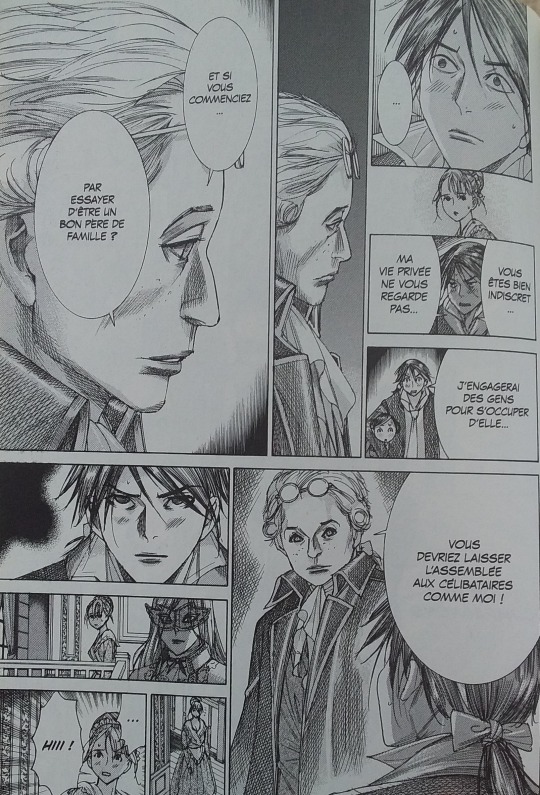
Robespierre : Shouldn’t you start trying to be a good family man ? You should leave the Assembly to single people like me !
We see Robespierre again later in a rather amusing scene with Gédéon. Gédéon, drunk, says Saint-Just's erotic writings told the boy is a virgin and is amused. And who is the virgin in the same bar as Gédéon? Boom Maxime !

Their following conversation will confirm that Louis XVI is the father of the kingdom.
Yeah, but when does George act ? Well, Gédéon sees Maxime again when the Estates General stagnate and there is a talk about creating a new assembly. Since Gideon is now part of the King's police force, Maxime asks him if he can meet the King discreetly to solve the problem. But without clearly knowing it, George is already starting to manipulate Maxime.
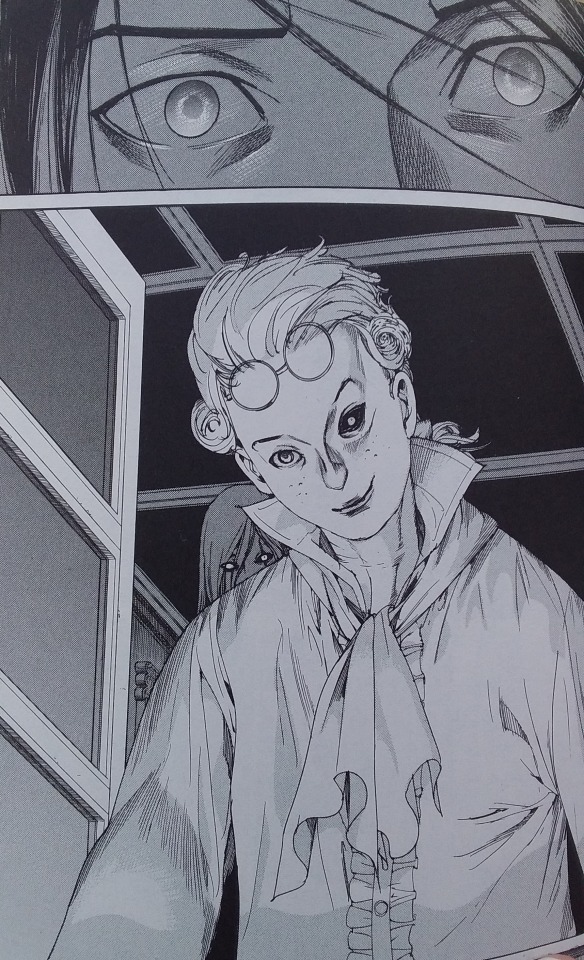
Keep in mind the puppet representation. It will be important for the next step. Because it’s present when Maxime's words contradict a part of his thoughs and when this thoughs takes controls.
After Gédeon refuses to join Saint-Just, Maxime explains to him, if Gédéon continues to hang out with the royal family, there will be repercussions. And if Gédéon tries to find his lost daughter and make politics at the same time, he will lose both. Because for Maxime, children are burden to their parents. Maxime explains his childhood, his dead mother and his father who left. He is resentful of himself because he believes it was his behavior as a child that made his father disappear, that he was a burden to him. This is why he doesn’t want children.

But underneath this justification, even if he pretends the opposite, he has hatred towards this father who abandoned him.
Gédéon : You have the right to hate your father.
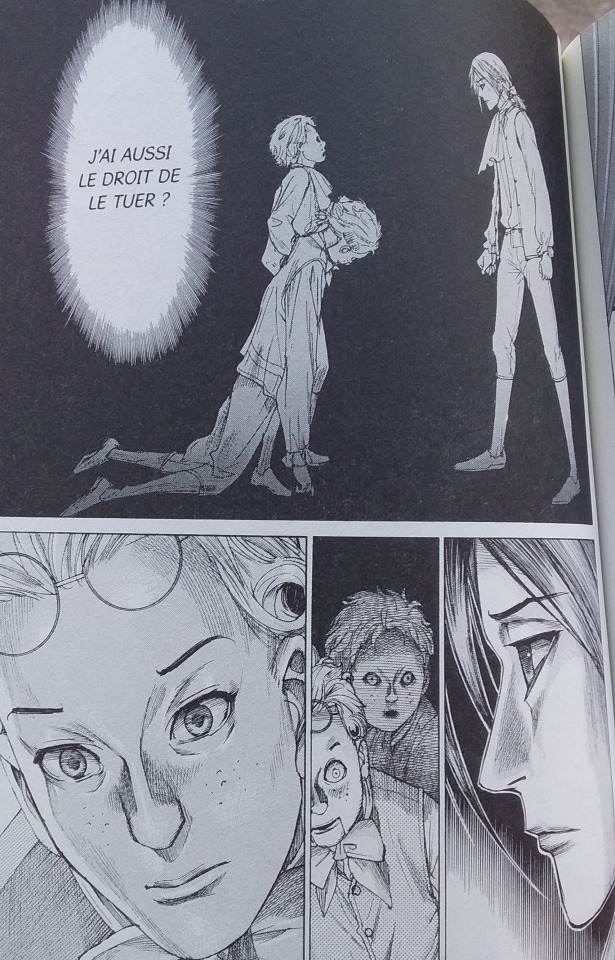
Robespierre : In this case, I have the right to kill him, right ?
On the day of the meeting with the king, on the way to the palace, Maxime admits to Gédéon that his father sends him letters. In this letters, his father talks about his new family. Of course he knows that this is probably a trap, but we feel that it’s a sensitive subject for him.

Robespierre : Over my shoulder, I saw myself when I was ten years old.
Then comes one of my favorite scenes, a scene of tension between Louis XVI and Robespierre. Louis explains there are three locks on the table, if he thinks Maxime is lying, he will break one of them.
Robespierre : Since that time, I have always respected you as a father.

Louis XVI : One...You were warned, lies don't work. Either you don't respect us, or you don't respect the concept of a father.
After two, Maxime admits being one of the instigators of the problems at the Estates General and to make it stop, Necker must be dismissed because he makes promises that the nobility will never accept. Louis accept to think about it.
And here comes the chapter where I most wanted seeing George to lose and die painfully because his plan is totally twisted. Maxime receives a letter from his father who tells him that Henriette might not have died if he had been there, implying that it is Maxime's fault that he left. Then Maxime sees in front of his house a woman abused by a man. He threatens to take him to court but the guy explains that Maxime has nothing to say about the correction of a husband to his wife, named is Henriette...Oh boy !

The next day, Maxime proposes her to leave her husband, that he can help her by offering her a place in the convent of Arras. There, she would be safe. But she refuses because her husband will find her and she is unworthy of his help. Maxime feels unable to do anything. He remembers his dying sister. In the evening, another intermission, but this time Maxime decides to act. He intervenes until the girl confesses her father married her.
At this words, Maxime becomes mad and releases all the hatred he has accumulated towards his father. George's plan to make him forget any peaceful method succeeded

Robespierre now lets his hate guide him. If Louis is the father of the kingdom and the father of his subjects, then he must pay too. He goes to see Necker, tells him to accept his resignation to become a martyr and harangues the assembly to join the people and take up arms. He explains the first attack will be at the Invalides, then the people need to take care of the Bastille afterwards, because it is a royal symbol.

Camille : Maxime notice me !
Gédéon doesn’t agree with Robespierre, he thinks it’s necessary to think of a more peaceful method because it risks having deaths. He no longer recognizes his friend
Robespierre : I assure you Gédéon, I haven’t changed. Gentlemen ! Listen up ! We've been trying to find a resolution through dialogue for a long time! Alas, all our efforts have been in vain...a pure waste of time...and why !?
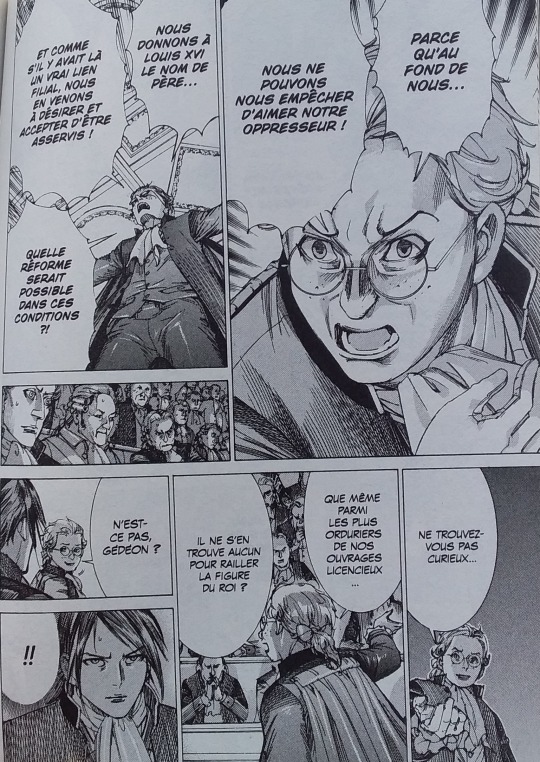
Robespierre : You too, Gédéon, I bet you've seen abused children love their fathers so much that they fall apart.
Gédéon: Yes...
We see him again only after the march of the women on Versailles. Gédéon tells him that George is the one who sent him the letters and played on his dislike for his father to kill the king. He wants to find the wise and peaceful Robespierre.

Gédéon : And this other one love his father.
But Maxime does not believe him. His hatred is still too strong. When another lawyer asks Maxime to save a man, Maxime takes time to think, because the man looks like his father. It’s the words of Saint-Just that convince him to give up this man because he had previously seen the damage caused by the Duke of Loire on his sons George and Gédéon.
Robespierre : He’s a complete stranger, there is no doubt about it !!
Saint-Just : Wouldn't it be better if he were really your father? If he were condemned to death, you would be delivered from him.
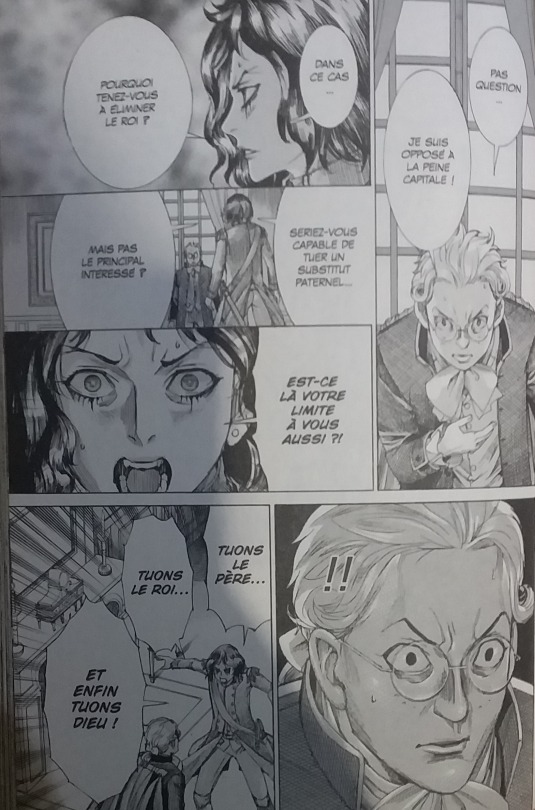
Saint-Just : Destroying everything to build a new order, that's what I think revolution is !

Finally, Maxime is released when the king died. Gédéon has found the death certificate of his father, confirming Maxime has sent an innocent man to death. Maxime seems to be happy on the day of the king's death but when he saw George and reconised him as the girl he tried to save, everything gets destroyed. He cries because after all he has done, he cannot go back.
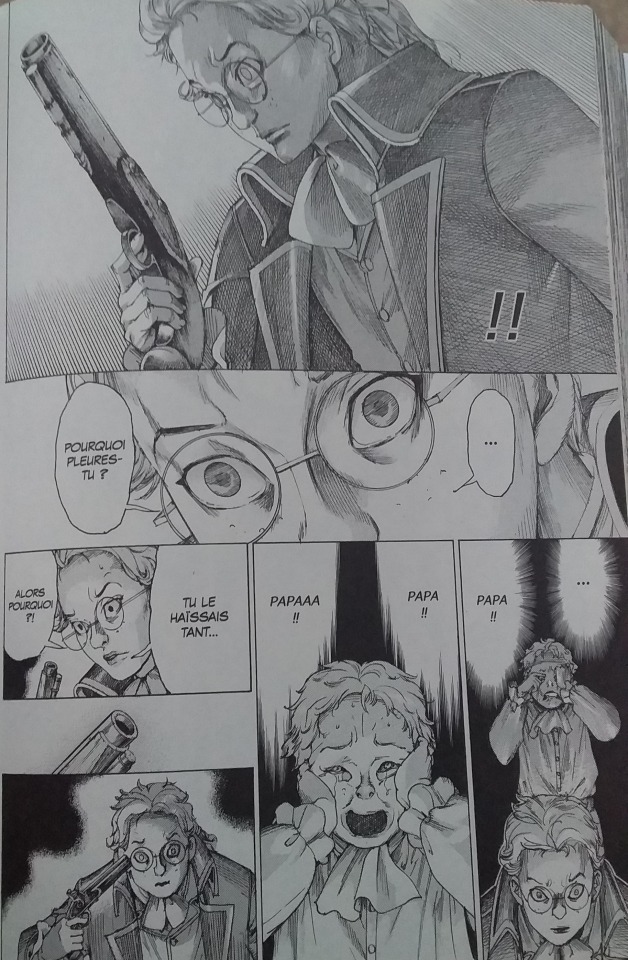
Saint-Just embraces Maxime who he’s crying : I will always remain at your side, until death separates us.
The last time we see him is when marie-Antoinette curses him and other revolutionaries at her execution;

I reconize Saint-Just, Robespierre, Desmoulins, Marat ? (right middle), Danton, Hébert, Mme Roland, Augustin ? (bottom right)
#frev#mangafrev#robespierre#saint just#louis xvi#marie antoinette#if anyone reconize all the revolutionaries at the end just tell me please !!
28 notes
·
View notes